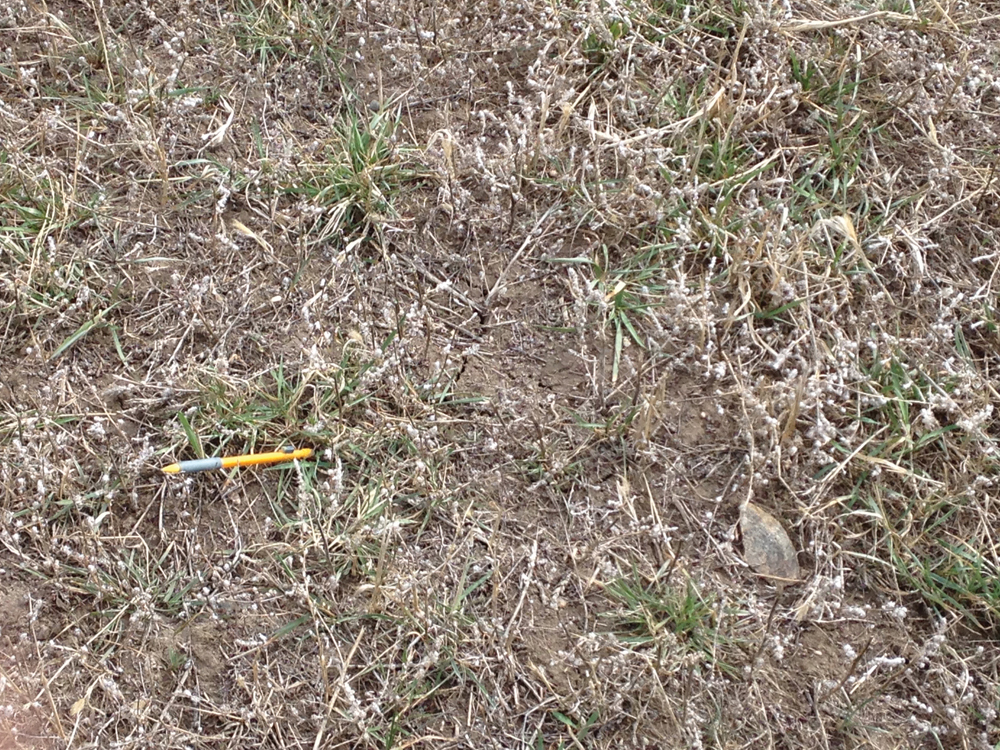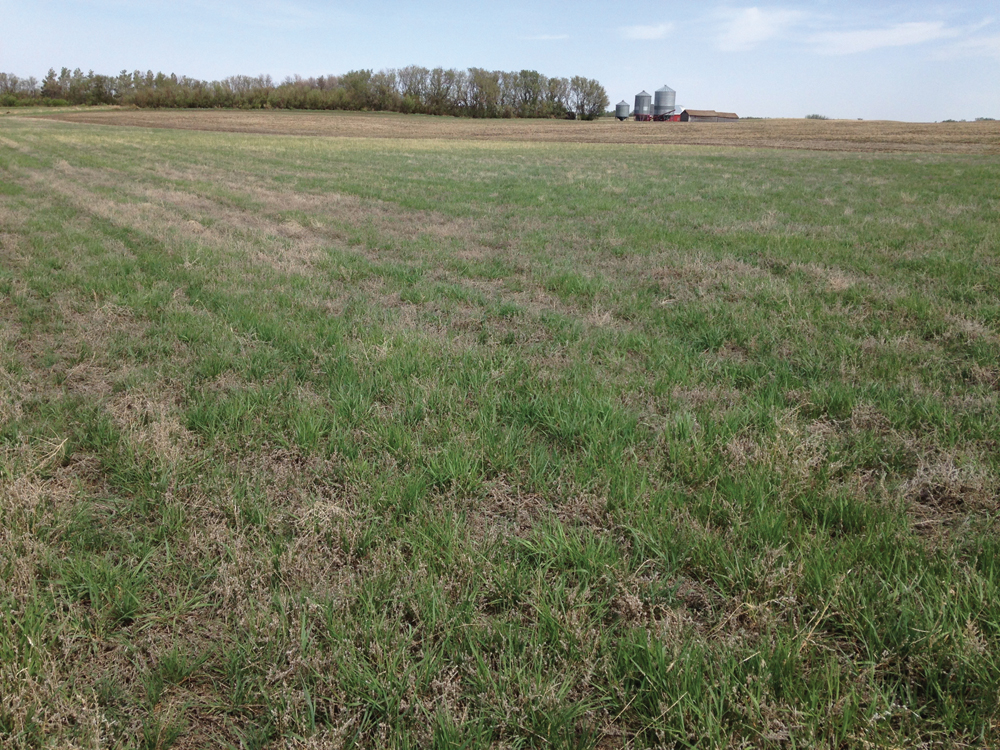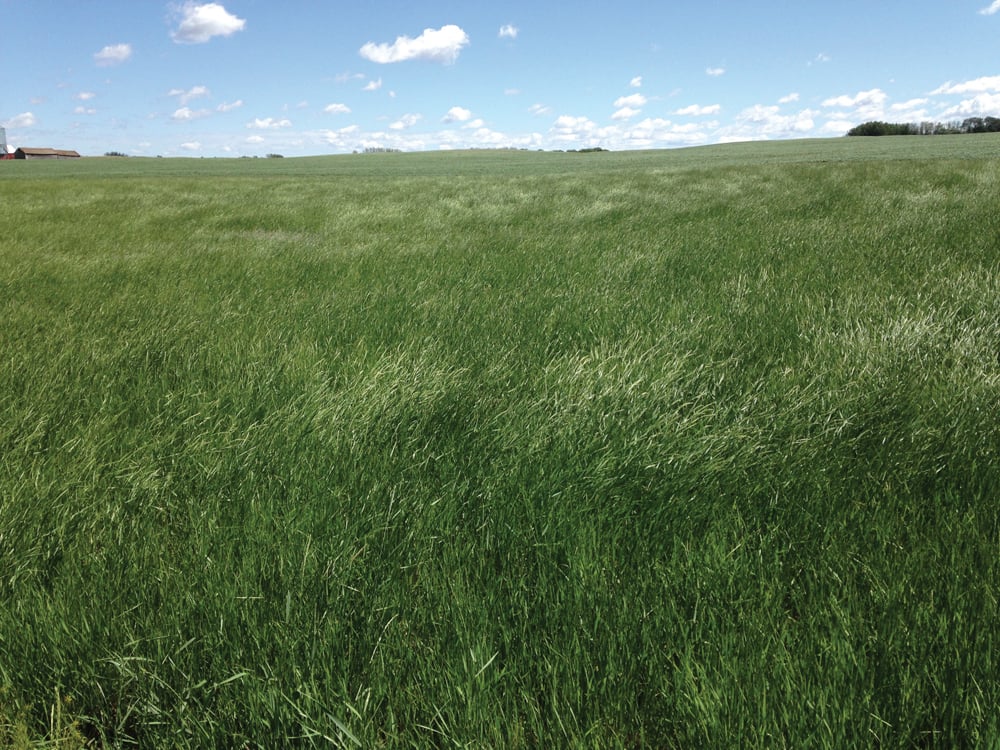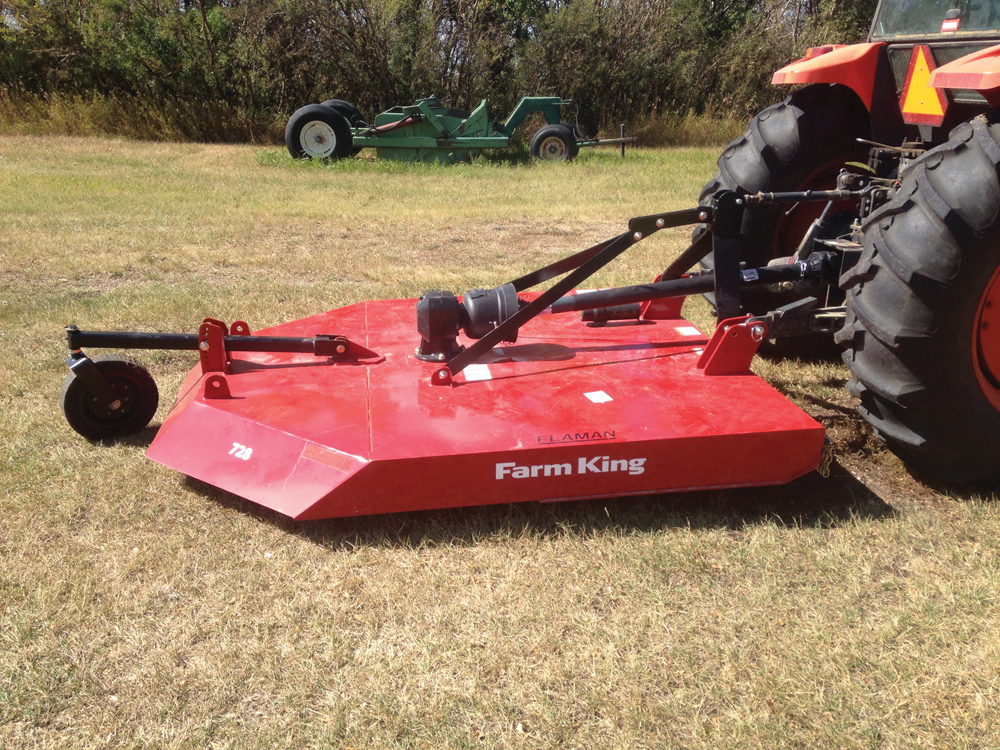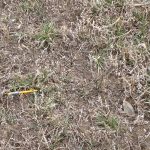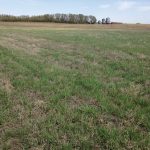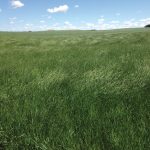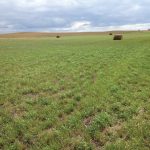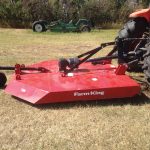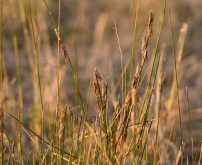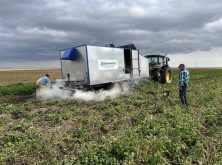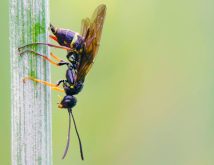
Photo 1 Sep 19 2020 3.3MB
This photo was taken on September 19, 2020. By this date, some grass was evident, but I still feared it was a failure. It did not look like a crop to me — but, patience, please.
Photo: Les Henry
Photo_2_April_10_2021__2.7MB.jpg
Photo taken on April 10, 2021. Still doubtful.
Photo: Les Henry
Photo_3_May_17,2021._3.1MB_JPG.jpg
Photo taken on May 17, 2021. Finally. Looking promising.
Photo: Les Henry
Photo_4_June_16,2021_3.3MB.jpg
Photo on June 16, 2021. Hey! It looks like a hay crop waving in the wind and not a kochia in site. At that date, it was the greenest patch of ground for miles around. With little rain and much heat, most annual crops were struggling.
Photo: Les Henry
Photo_5_Sep_3,2021_3.4MB_.jpg
This photo was taken on September 3, 2021. In July, my neighbour made a few bales and by September there was enough regrowth to give hope for next year.
Photo: Les Henry
Photo_6_Mower_3.4MB.jpg
My shiny, new, seven foot, three-point-hitch mower for future grass projects.
Photo: Les Henry
Saline soils flush up to the max with a dry spell after many wet years. The wet years bring up the water table and the dry years provide the evaporation to concentrate the salt. There is often an underlying cause (literally). And that underlying cause is artesian pressure from an aquifer. On my Dundurn farm the aquifers lie beneath the water runs/ravines that cross the land.
My management of those salty acres had been to mow the kochia before it went to seed but leave it to grow to use up water. That did prevent it from tumbleweeding all over the place.
In recent years, many farms have grown tired of pouring money down badger holes (i.e. seeding and fertilizing unproductive salty ground to annual crops). Every acre loses money. Seeding down salt-tolerant grasses can turn those acres profitable. If the salty acres are small pieces scattered around it can be difficult. In my case, most of the problem is along the west side of the quarter, so it is easy to treat it separately.
Read Also

Claas brings 1000 Series SP forage harvesters to Canada
In mid-August, Claas unveiled its new line of Jaguar forage harvesters at an event in Visalia, California, deep in the heart of that state’s dairy region.
My grass of choice was a mixture of two-thirds AC Saltlander green wheatgrass and one-third common slender wheatgrass. Slender wheatgrass is quicker to establish but only lasts for a few years.
Most guidelines for seeding suggest using what equipment you have but ensure good soil contact and seed shallow. My only option was a museum piece — an old MF 360 15-foot discer. I had successfully seeded canola with it, but the same procedure did not work for grass. After some modification it did work.
Patience
When establishing grass, one of the first requirements is patience. You do not seed it on Monday and run out the next Monday to see if it is up yet.
Seeding was on May 15, 2020. And an inch of rain on May 20 and three inches in June did give some hope. The patch quickly turned green, but it was almost all volunteer wheat, green foxtail and kochia. It was a mess. The first impulse was to hook onto the cultivator and clean the mess up.
Stop. Leave the cultivator and get the mower. My very old pull-type gyro mower did the job — but it was a pain. In 2020, the rain tap turned off on July 8, so August mowing was not necessary.
The reason the grass is so slow to show top-growth is it is setting up housekeeping for the long haul. It is putting down roots. The deep roots kept it green even when the rains quit. At the University of Saskatchewan Agriculture Building, there is a root mount of a two-year-old crested wheat plant with roots to eight feet.
Conclusion
For successful grass establishment, the two main requirements are patience and a good mower.


